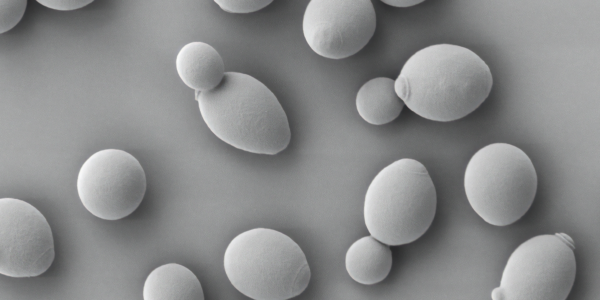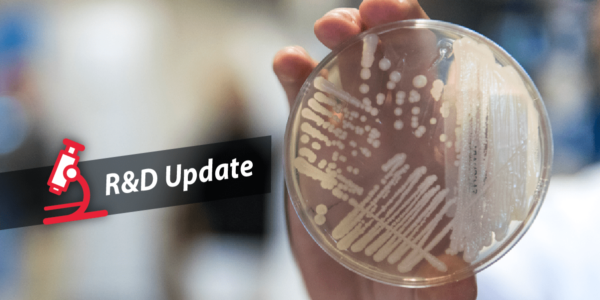Blog | Reading Time 4 minutes
Hop biotransformation & Yeast by Richard W. Molitor & Dr. Thomas H. Shellhammer
A Focus on Releasing Polyfunctional Thiols During Fermentation
While historically hops (Humulus lupulus) were added for their preservative properties and aroma and flavor was a side benefit, consumers’ current interest in hop-forward styles like the IPA has placed aroma front and center in terms of hops’ importance to beer. With upwards of 1,000 different aromatic compounds found within their essential oil fraction, hops contribute a broad range of aromas to beer ranging from woodsy and herbal to spicy and floral to citrus and tropical.1, 2
The importance of yeast in hop biotransformation
Regardless of beer style, yeast have a tremendous impact on beer flavor. While the main end products of fermentation are alcohol and carbon dioxide, yeast contribute a vast array of different fermentation byproducts, such esters, higher alcohols, carbonyls, and sulfur containing compounds that contribute significantly to beer flavor. Yeast also have the ability to modify components coming from wort and/or hop-derived precursors via enzymatic biotransformations. These flavor precursors include fatty acids, carbonyls, glycosidicallybound terpene alcohols and cysteine-bound thiols. This last set of compounds, thiols, are currently the focus of much attention within the brewing community and the term “biotransformation” is most often referring to the release of free thiols from their odorless bound precursors.
Aroma potential of thiols in brewing
Thiols represent a broad class of aromatic compounds containing a sulfhydryl functional group (R-SH). While this classification contains many different compounds, three polyfunctional thiols have received considerable attention from brewing scientists:
• 4-mercapto-4-methyl-pentan-2-one (4MMP or 4S4MP) Black currant. Threshold: 6ng/L
4-mercapto-4-methyl-pentan-2-one (4MMP or 4S4MP) Black currant. Threshold: 6ng/L
• ![]() 3-mercaptohexanol (3MH or 3SH) Exotic, citrus, grapefruit. Threshold: 55ng/L
3-mercaptohexanol (3MH or 3SH) Exotic, citrus, grapefruit. Threshold: 55ng/L
•  3-mercaptohexyl acetate (3MHA or 3SHA) Passion fruit. Threshold: 5ng/L
3-mercaptohexyl acetate (3MHA or 3SHA) Passion fruit. Threshold: 5ng/L
All three are extremely potent. For example, the sensory detection thresholds in beer of 3MH and 3MHA are 55 and 5 ng/L, respectively.3 These three compounds possess intense aromas such as boxwood and black current (4MMP), grapefruit and rhubarb (3MH) and guava and passionfruit (3MHA) and can contribute to a beer’s fruity and tropical aroma profile.
While free thiols are found in hops and vary based on hop variety, they are accompanied by their odorless, bound, precursor forms, as cysteinylated- or glutathionylated- conjugates. Quite interestingly, the pool of thiol precursors is much larger than the free forms — 100-1000 times larger in some instances.4, 5 This huge pool of odorless precursors represents untapped aroma potential from these potent compounds, and this is where brewers and/or brewing scientists interested in hop biotransformation are currently fixated. Yeast possess the ability to cleave the thiols from their precursors via a carbon-sulfur beta lyase enzyme thereby releasing thiol-driven aromas.
Enhancing the fruity characteristics of beer with yeast
If scientists and brewers can utilize the power of yeasts’ biochemical pathways to release 3MH and 4MMP from their cys- glu- conjugate form(s), they can theoretically increase the fruity/tropical characteristics of beer. This is driving the recent attention on thiols specifically as they relate to biotransformation. Add to this is variability in yeast to esterify 3MH to 3MHA via acetylation6, which while equally important, does not rely on the same biochemical pathways as releasing thiols from their precursors, but is nonetheless a different type of biotransformation.
The search is on for yeast that have high beta lyase activity and for the best fermentation conditions, media/wort composition, and/or timing during fermentation or post fermentation to facilitate yeast releasing thiols from their bound precursors. Additionally, yeast vary in their ability to produce esters and it is likely that the interplay between esters, and thiols influence the hoppiness of beer beyond thiol production alone. Thankfully, the diversity of available yeast strains offer brewers a deep toolbox for creating interesting flavors.
References
1. Sharpe, F. R.; Laws, D. R. J., THE ESSENTIAL OIL OF HOPS A REVIEW. Journal of the Institute of Brewing 1981, 87 (2), 96-107.
2. Eyres, G.; Dufour, J.-P., 22 – Hop Essential Oil: Analysis, Chemical Composition and Odor Characteristics. In Beer in Health and Disease Prevention, Preedy, V. R., Ed. Academic Press, 2009; pp 239-254.
3. Kishimoto, T.; Wanikawa, A.; Kono, K.; Shibata, K., Comparison of the Odor-Active Compounds in Unhopped Beer and Beers Hopped with Different Hop Varieties. Journal of Agricultural and Food Chemistry 2006, 54 (23), 8855-8861.
4. Roland, A.; Viel, C.; Reillon, F.; Delpech, S.; Boivin, P.; Schneider, R.; Dagan, L., First identification and quantification of glutathionylated and cysteinylated precursors of 3-mercaptohexan-1-ol and 4-methyl-4-mercaptopentan-2-one in hops (Humulus lupulus). Flavour and Fragrance 2016, 31 (6), 455-463.
5. Schonberger, C.; Dagan, L. In Development of Thiols and Thiol Precursors in different Hop Varieties during Hop Harvest and their impact on beer flavor, Craft Brewers Conference 2020.
6. H.Swiegers, J.; Willmott, R.; Hill-Ling, A.; Capone, D. L.; Pardon, K. H.; Elsey, G. M.; Howell, K. S.; Lopes, M. A. d. B.; Sefton, M. A.; Lilly, M.; Pretorius, I. S., Modulation of volatile thiol and ester aromas by modified wine yeast. Developments in Food Science 2006, 43, 113-116.
Published Jan 25, 2023 | Updated Jul 11, 2023
Related articles
Need specific information?
Talk to an expert

